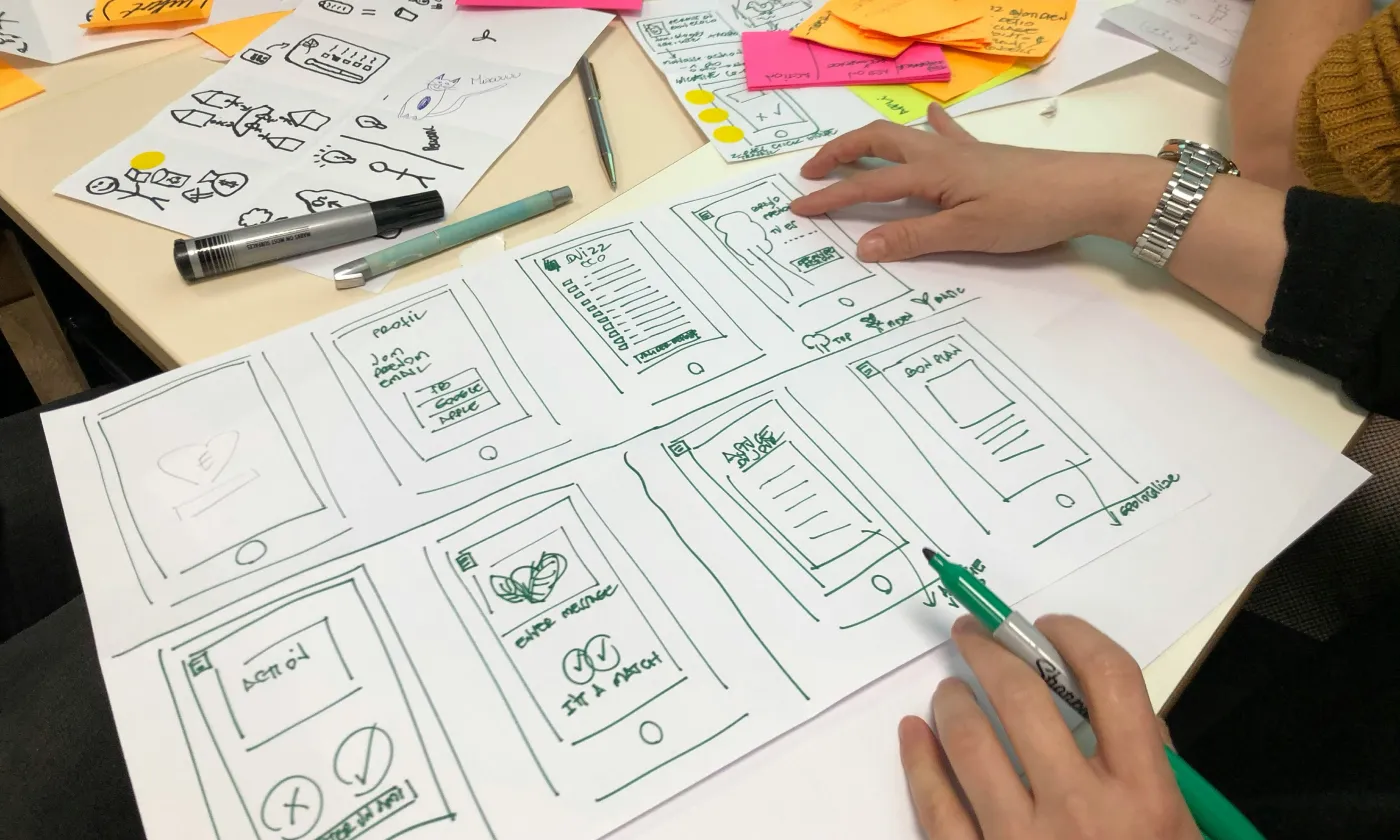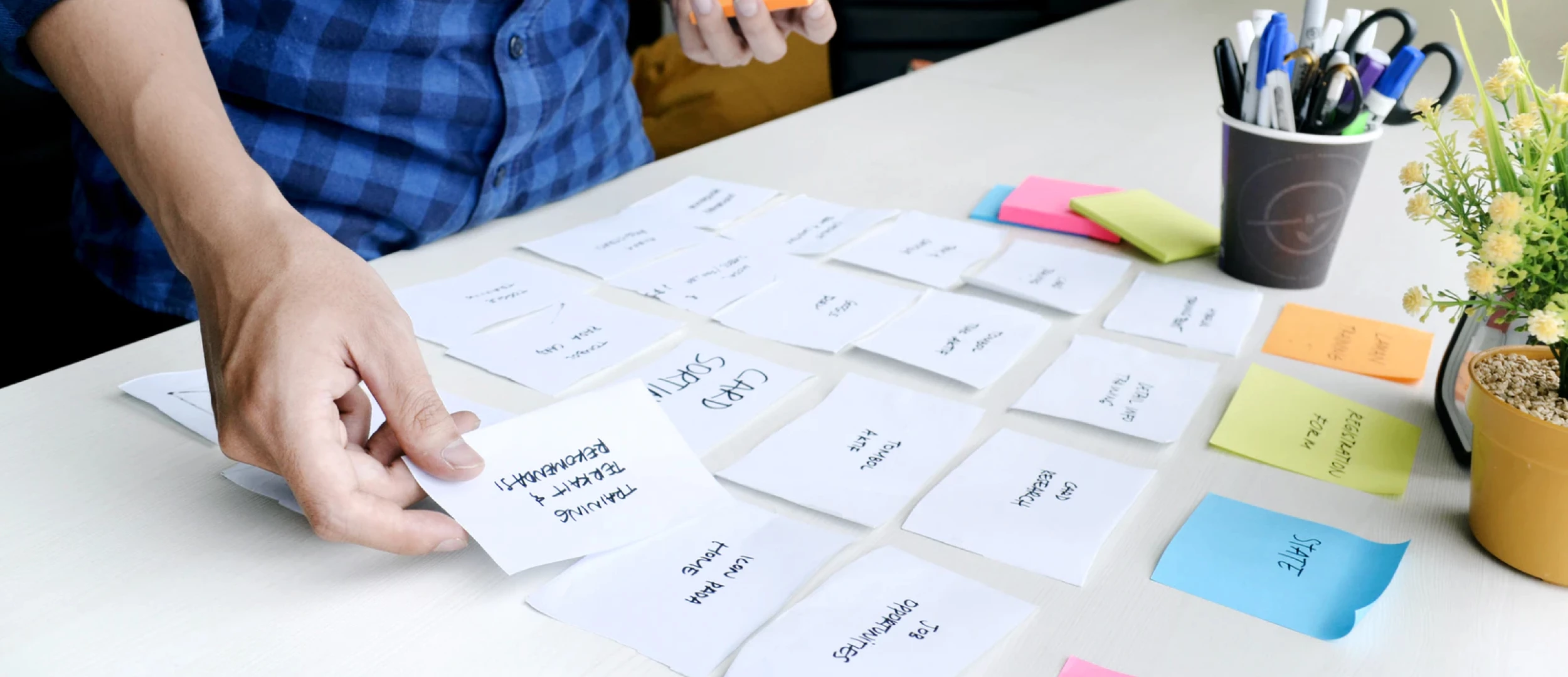
The most sought-after designers today are the T-shaped specialists. Such people are somewhere in the middle of a generalist, who is able to turn a hand to anything and a specialists, who knows all the ropes in a particular sphere. For example, it may be a designer who specializes in UI and User Journey Map along with Research. Our design team decided that I have to improve my skills in the discovery process and go to the User Research ABC, because our studio implemented a new service — discovery phase.
It was 4day training with theory in the first part of the day and practice in the second part. We were divided into teams. Each team had different cases based on the real projects from leading companies of our country. Our goal was to help solve the real problems of the company. The company we got was Nova Poshta the name of our team was «Delta».
CJM + Business Interview
Customer Journey Map —is a scenario containing the actions, phases, thoughts and emotions of the customer on his way to achieving the result. When a person wants something to be delivered to him or her by a post service, he or she has to go through the following stages: the search of the item, the order placement, waiting for the parcel, receiving the parcel, and time after the item is received. The client has certain emotions at each of the stages: hesitations, excitement, fear, interest, joy, possibly disillusion, etc.
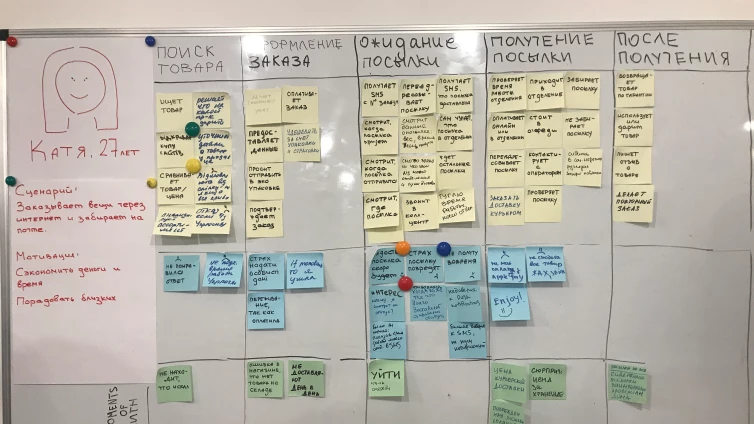
We created an imaginary person with an imaginary scenario and started our brainstorming. (You’ll find how to choose a person below.)
The main point for our team was to turn on empathy and throw everything out of our heads, filter all information and find insights. The hardest thing was creating a journey with details because sometimes we forgot about it. After that we met with the stakeholders — 2 designers from Nova Poshta and conducted a business interview. Also, we discussed our CJM step by step to add more details to our CJM. By finishing we moved physical CJM to digital view. There are plenty of services nowadays which facilitate CJM filling in. We usually use the mind map.
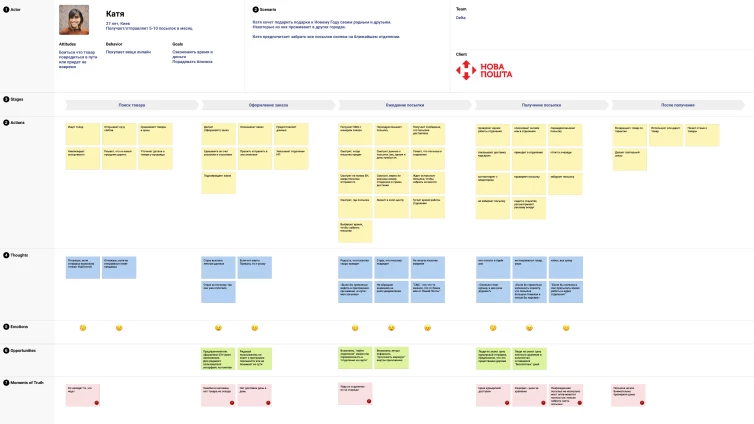
Screener
All our hypotheses which we use in the CJM are based on our own vision and business vision. So the next step is to adjust our CJM to the scenarios of real customers. First we have to weed out an unnecessary audience and google form with simple and short questions (in other words — screener) will help us. It’s important to put simple questions about the client and his experience it may be 2-3 questions for each point, like
- Introduce yourself.
- How old are you?
- What’s your job?
- Do you often use post services?
- What post services do you use?
Then you can proceed to a more detailed research and ask the client to tell about his last personal experience in detail and about the concerns he has. It’s vital to ask about the problems the user faces and how he would like them to be solved, about the possible difficulties in interaction with a service or its software solution. You may also ask about the reasons, why he refused form using other post services, what influenced his or her decision most.
Of course, we were given the right audience to interview, so we didn’t need to search by ourselves because it took a lot of time. If you do not have the target audience indicated you have to form accurate criteria of the respondents. They are usually divided into 2 types — sociodemographic criterion, like sex, age, locale, interests, etc. and the presence of a certain experience, like shopping online. There are various types of samplings, but to make a sample representative and trustworthy you should interview 3-6 persons in case your respondent represents a company and 5 to 10 people representing physical persons.
Interview
User Interviewing is a UX research method where a researcher asks a customer questions on the topic he is interested in in order to find a solution to the problem.
Question types we have to ask:
- process «how?»
- explanation «why?»
- description «what?»
- context «when?»
- obstacles «what do you do when?»
- perfect setup «what if...?»
There were three people in our «Delta» team, so we decided that one person would ask questions, and the two others would listen and note down the info.
We settled a goal and created the list of questions based on the plan we got: First the person had to introduce himself. Further on we proceeded to the gals of the interview, but the main point was not to reveal the real goal of the survey right away. So we came up to our customers with a more abstract goal. Then we continued with simple questions, asking about some typical situations or routine. As soon as the customer was ready for a deeper conversation we proceeded to the stories with certain details and step by step analyses of the consumer last experience. Through the interview we had to understand what «job» customers do. At the end of the interview, we asked to look through the questions to confirm the answers. In total, our team conducted 6 in-depth interviews.
We attached files and notes with all the info to the Notion at the end of the day. At the end of our work Nova Poshta’s stakeholders had to get all the information about our research, so they could analyze it and implement some of our insights.
Persona
We created a real person with quotes, biographical information, needs and pain points based on our interview results, facts, observations.
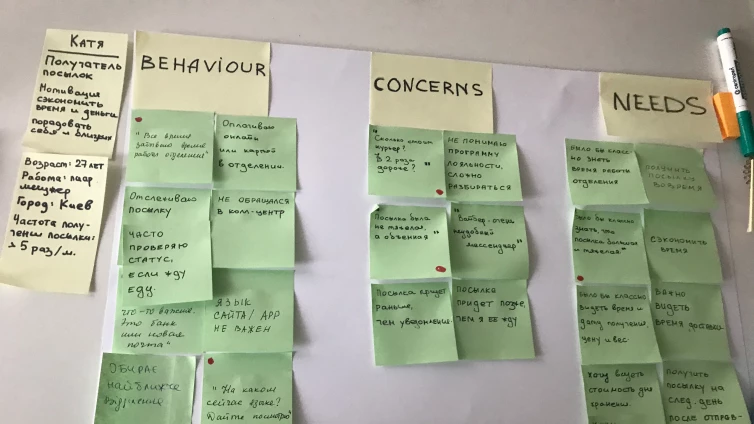
We found out the similar patterns in the customers’ behavior and combined them all. Hus we created a typical customer and represented it in a digital view.
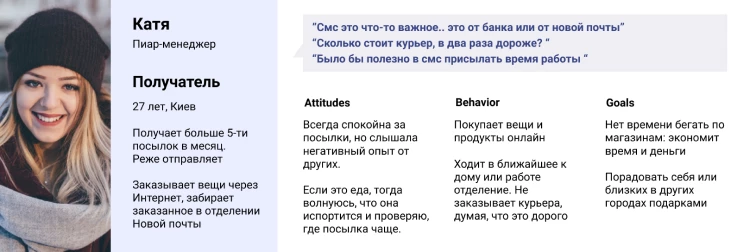
Usability Testing
As I wrote before, we worked with a real product, so our team tested Nova Poshta iOS app. Each team member interviewed the customers separately; in the course of the conversation we took notes of the person’s behavior, comments, errors and completion of each task.
We gave the customers contextual scenarios and asked them to think aloud while they were completing our tasks. Concurrent Think Aloud — is a technique which allows to understand the user’s thoughts in course of the interaction with a product. The user has to voice his running stream of consciousness during the task fulfillment.
UX Metrics
UX metrics are a set of quantitative data points used to measure, compare, and track the user experience of a website or app over time.
The first step is identifying the goals: what tasks the customers need to accomplish. Then goes identifying the signals — it’s how success or failure in the goals might manifest itself in the customer behavior. What actions would indicate the goal had been met? And finally it results in building specific metrics for each signal.
For example, one of our goals was called a courier. The signal for this goal is filled out the three-step form and clicked on call to action. And metrics — the ratio of customers who often send parcels 10+ kg and use the courier service to those who often send parcels 10+ kg and ordered a courier only once.
Conclusion
We have mastered the key stages of the user research — from planning to analyzing results in 4 days of intensive teamwork. We chose methods for specific tasks at different stages and conducted research with real users. Finally, we presented our project to Nova Poshta stakeholders. We always felt at ease because we had an experienced trainer who provided practical advice in the whole research process. I really appreciate the experience and have already used my new skills in the discovery phase of our new project.



